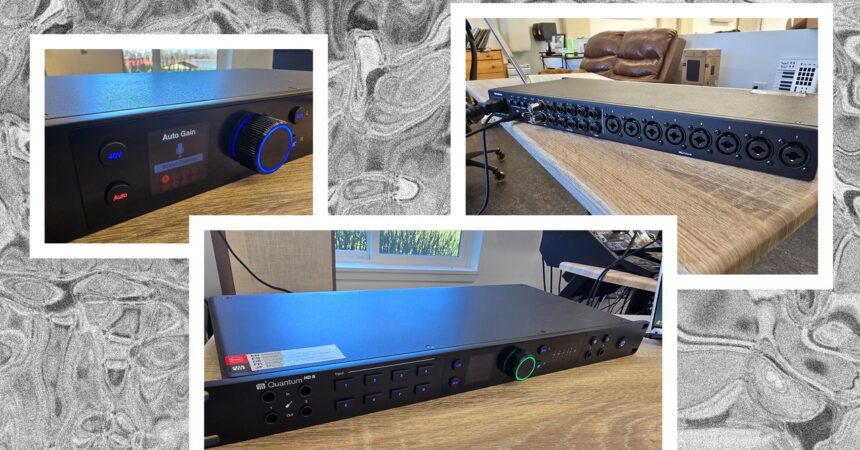In the past, I faced significant latency challenges while recording audio, specifically the delay between the sound capture and its display on the screen. I would connect my audio interface to the computer, set up my drums with microphones, and struggle to sync my recordings with the tracks I was overlaying. Luckily, the first generation of PreSonus’ Quantum audio interfaces came to my rescue about ten years ago. With their faster-than-USB Thunderbolt connections, they provided nearly instantaneous feedback, aided by the seamless integration with PreSonus’s Studio One software, which doesn’t come burdened with unnecessary software.
The latest Quantum HD interfaces from PreSonus have enhanced user-friendliness even more. These models feature USB-C connectivity, a sleeker design, improved displays, and front-panel instrument inputs developed in collaboration with Fender, PreSonus’s parent company. There’s also an automatic gain leveling function for the inputs, enabling a single person to efficiently manage a large studio setup.
If you’re looking for an economical audio interface to rival the big names like Universal Audio, Apogee, Focusrite, Audient, or SSL, the new PreSonus Quantum HD models are exceptional and provide impressive sound quality. For those using Studio One, they represent an obvious choice.
Audio Boxers
Both the HD 2 and HD 8 models are unassuming in appearance, designed to blend into the workspace of any dedicated home studio aficionado among various equipment. They come in plain black casings with blue highlights and digital screens, appearing relatively neutral when not in use. (This is especially nice for high-priced studio gear, which can sometimes inadvertently attract thieves.) The larger model can be mounted in a rack, while the smaller one is tailored for desktop or mobile use, yet it can easily be placed on a desk if a rack is unavailable, as I did.
Photograph: Parker Hall
The unit’s construction is sturdy and metallic, featuring ample ventilation on the sides to maintain a cool temperature during extended recording sessions. I appreciate that it utilizes a standard three-prong power cable, eliminating the need for cumbersome wall adapters, and that it easily connects to any contemporary USB-C device.
I have been a loyal PreSonus user for years, utilizing various products ranging from Faderport controllers (USB devices that provide fader control for playback across most DAW software) to the Monitor Station (an external device that allows for simple speaker swapping with the press of a button). Their gear functions well and is priced competitively against many rivals.
Pro-level alternatives from brands like Universal Audio and Apogee can range from moderately expensive to exorbitantly so, depending on their category, and in my experience, they do not necessarily sound superior. The Quantum HD interfaces can easily hold their ground against the very popular 8-input models from Universal Audio in terms of audio fidelity and build quality. Universal Audio’s products are currently regarded as the benchmark in this category, with prices exceeding double that of the Quantum models.
Studio One quickly recognizes the Quantum HD 8, allowing for seamless control such as activating 48v phantom power for condenser microphones and adjusting levels directly within the software—eliminating any need for complex intermediary software between the interface and the DAW.
Photograph: Parker Hall










